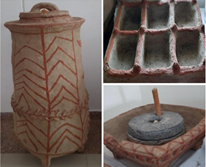

9th August 2022 (8 Topics)
Context
August 9 is celebrated as International Day of the World’s Indigenous People.
|
2022 theme: “The Role of Indigenous Women in the Preservation and Transmission of Traditional Knowledge”. |
International Day of the World’s Indigenous Peoples:
- In 1982, the United Nations General Assembly proclaimed 9 August as International Day of the World's Indigenous Peoples.
- To commemorating the day of the first meeting of the United Nations Working Group on Indigenous Populations of the Sub-Commission on the Promotion and Protection of Human Rights, held in Geneva in 1982.
About
Who are Indigenous people?
- As defined by the United Nations, Indigenous peoples are inheritors and practitioners of unique cultures and ways of relating to people and the environment.
- They have retained social, cultural, economic and political characteristics that are distinct from those of the dominant societies in which they live.
- Despite their cultural differences, indigenous peoples from around the world share common problems related to the protection of their rights as distinct peoples.
|
International Decades of the World’s Indigenous Peoples
|
Indigenous People in India
- Indigenous people in India are also called as Scheduled Tribes.
- Scheduled Tribes are said to be the earliest inhabitants on the Indian sub-continent.
- They are considered to be socially and economically least advanced.
- Gonds, with a population of 4 million are found in the central Indian states of Madhya Pradesh, Maharashtra, and Andhra Pradesh, are one of the most dominant tribes in India.
- Bhills of Western India, Santhals from the Eastern India, and the Andamanese from the Andaman & Nicobar Islands are some of the dominant tribes in India.
|
Indigenous People of Banswara villages:
|
More Articles



